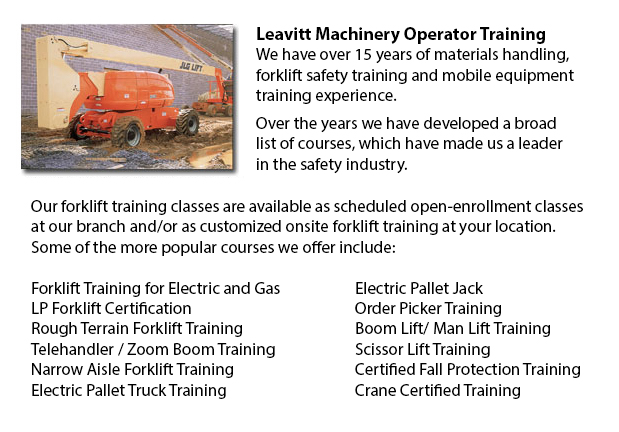
Boom Lift Certification Edmonton - Elevated work platforms allow work and maintenance operations to be done at heights that can not be reached by whatever other way. Workers utilizing boom lifts and scissor lifts can learn how to safely operate these equipments by acquiring boom lift certification training.
When work platforms are operated unsafely, they have the potential for serious injury and even death, regardless of their lift style, application or the site conditions. Electrocution, falls, tip-overs and crushed body parts can be the tragic result of wrong operating procedures.
In order to prevent aerial lift accidents, people need to be qualified to train workers in the operation of the certain type of aerial lift they will be utilizing. Controls should be easily accessible beside or in the platform of boom lifts used for carrying workers. Aerial lifts must not be be modified without the express permission of other recognized entity or the manufacturer. If you are renting a lift, ensure that it is maintained properly. Before utilizing, safety devices and controls need to be inspected to be able to ensure they are properly working.
It is important to follow safe operating procedures to be able to avoid workplace accidents. Driving an aerial lift while the lift is extended should not be carried out, nonetheless, a few models are designed to be driven when the lift is extended. Set outriggers, if available. Always set brakes. Avoid slopes, but when necessary use wheel chocks on slopes that do not go over the slope limitations of the manufacturer. Follow weight and load restrictions of the manufacturer. When standing on the platform of boom lifts, use a safety belt with a two-foot lanyard tied to the boom or basket or a full-body harness. Fall protection is not required for scissor lifts which have guardrails. Never climb or sit on guardrails.
This course features the following topics: safety guidelines to be able to prevent a tip-over; training and certification; surface conditions and slopes; checking the work area & travel path; stability factors; other guidelines for maintaining stability; weight capacity; leverage; pre-operational check; testing control functions; mounting a motor vehicle; safe operating practices; safe driving procedures; power lines and overhead obstacles; making use of harness and lanyards; PPE and fall protection; and prevent falling from platforms.
When successful, the trained employee will learn the following: training and authorization procedures; pre-operational inspection procedures; factors affecting the stability of boom and scissor lifts; how to avoid tip-overs; how to utilize PPE, how to use the testing control functions and strategies to prevent falls.
-
Forklift Training Programs Edmonton
Forklift Training Programs Edmonton - If you are searching for work as an operator of a forklift, our regulatory-compliant lift truck training programs provide excellent instruction in numerous styles and types of forklifts, classes on pre-shift insp... More -
Heavy Equipment Training School Edmonton
Heavy Equipment Training School Edmonton - The heavy equipment operator courses will assist the operator in acquiring the required skills and knowledge they will require to be able to enter the workforce as an entry level operator. In this 12 week co... More -
Manlift Ticket Edmonton
Manlift Ticket Edmonton - The Elevated Platforms and Manlifts Certification program helps to provide the necessary training on the safe operating procedures, work practice, rules and regulations regarding the daily activities for the operators of thi... More -
Crane License Edmonton
Crane License Edmonton - Crane operators must be "credentialed", which means they must have a crane operator license or certification. Credentialing is considered a mandatory governmental requirement in order to practice as a crane operator. Having a... More -
Counterbalance Forklift License Edmonton
Counterbalance Forklift License Edmonton - When operated by totally trained operators, forklifts could become a major advantage for firms and companies. We could offer your staff a comprehensive training program which covers all aspects of operating... More -
Manlift Safety Training Edmonton
Manlift Safety Training Edmonton - Manlift operators have to be aware and cognizant of all the potential hazards which are associated with particular types of scissor lifts. They need to be able to operate the scissor lift in a way that protects not... More -
Forklift Training School Edmonton
Forklift Training School Edmonton - Forklift Training School And Reasons Why It Is Really Important - Industry and federal regulators have established the criteria for forklift safety training based on their existing standards and regulations. Indivi... More -
Overhead Crane Safety Training Edmonton
Overhead Crane Safety Training Edmonton - The overhead crane safety training course is designed to equip the operators with the right skills and knowledge in the areas of: crane safety precautions, materials handling, accident avoidance, and equipmen... More

Forklift Training Edmonton
crossorigin="anonymous">
TOLL FREE: 1-888-254-6157
Edmonton, Alberta
forklifttrainingedmonton.com
Email Us
About Us


